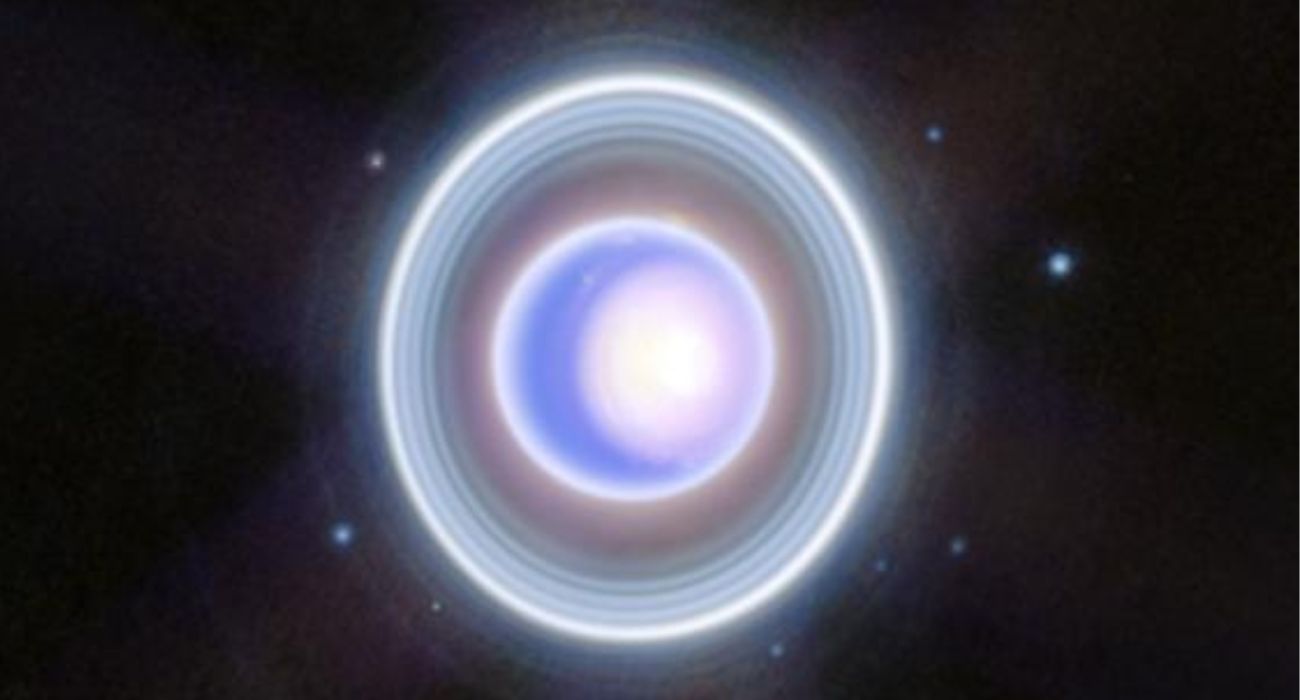NASA has revealed new images of the distant gas giant Uranus, showing the planet as well as its ring system and moons.
The new images of Uranus, captured by the James Webb Telescope, show its seasonal polar cap as well as atmospheric features and even its moons. Due to the planet being tilted on its side, scientists also captured its complete ring system, including the Zeta ring, “the extremely faint and diffuse ring closest to the planet.”
Closer inspections of the images allowed scientists to peer into the meteorology of the gas giant, observing its storms as well as seasonal changes. Scientists aim to use the Webb telescope to gain more insight into Uranus’ atmosphere and gain an understanding of the planet’s complex weather and seasons.
The images also showcase 14 of the planet’s 27 moons, those being Oberon, Titania, Umbriel, Juliet, Perdita, Rosalind, Puck, Belinda, Desdemona, Cressida, Ariel, Miranda, Bianca, and Portia. Scientists hope to use data gathered from the telescope to inform future missions to the gas giant and to study distant worlds.
“Uranus can also serve as a proxy for studying the nearly 2,000 similarly sized exoplanets that have been discovered in the last few decades,” reads NASA’s website. “This ‘exoplanet in our backyard’ can help astronomers understand how planets of this size work, what their meteorology is like, and how they formed. This can in turn help us understand our own solar system as a whole by placing it in a larger context.”
The James Webb Telescope has garnered multiple achievements since its launch in 2021, capturing new images of the cosmos and even evidence for life-supporting substances on distant worlds. NASA scientists announced earlier this year that they had found the potential for life in carbon-bearing molecules present in the atmosphere of a distant super earth named K2-18 b, as previously reported by The Dallas Express.






